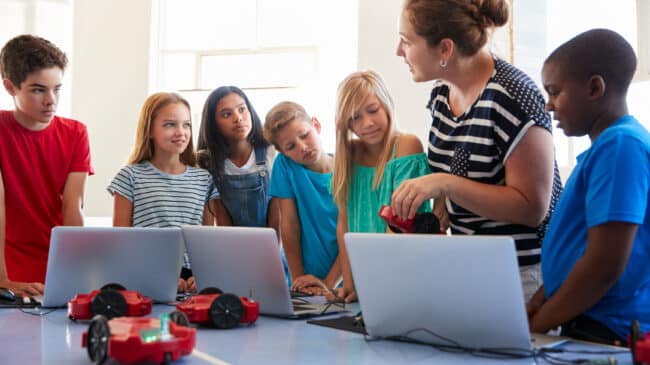Despite widespread advances in technology and educational research in recent decades, most states use a one-size-fits-all public education model that looks largely the same as it did a century ago. But Arizona has been an outlier, leading the way in expanding educational opportunities and providing families with options that allow them to find a school that best fits the needs of their students. Now, policymakers in Arizona are once blazing education innovation trails with a bill that would give educators even greater flexibility to adopt learning models that fit the unique needs of students.
Most states have myriad laws and regulations on the books that ultimately affect how public schools organize themselves and serve students. For example, about two-thirds of Idaho’s education dollars come with strings attached. Texas has hundreds of top-down mandates that cover everything from curricular requirements to birthday treats in classrooms.
But across the country, perhaps the most fundamental restrictions are seat time requirements that dictate the number of days and hours that students must be in classrooms. These policies assume that student learning must take place in lockstep—students learning the same content at the same time, and in the same place. Importantly, these requirements are tied to attendance or enrollment counting mechanisms that determine school districts’ funding and thus govern much of school operations in most states.
For instance, to count as a full-time high school student in Arizona—and thus to generate a full Average Daily Membership (ADM) funding allotment—a student must be enrolled in at least four subjects that are scheduled to meet for an equivalent of 720 instructional hours during a school year, with similar definitions in place for other grade levels and programs. These requirements are generally accompanied by narrow definitions of instruction and instructional hours, which affect things such as school staffing patterns, scheduling, and course offerings. As a result, school districts and charter schools are forced to standardize learning opportunities and little innovation can take place.
Arizona’s House Bill (HB) 2862 would change this by allowing Arizona public schools to create their own instructional time models to accommodate learning that occurs outside of classroom walls and traditional school days. After at least two public hearings, the legislation would enable governing boards to decide to deliver the required instructional hours through any combination of direct instruction, project-based learning, independent learning, and mastery-based learning, with expanded flexibility for structuring remote options. These hours could then be used to satisfy the time requirements that are used to calculate funding and ensure that all students are receiving adequate amounts of instruction.
Importantly, HB 2862 would also give public schools the flexibility to reallocate per-pupil instructional hours between courses so that they can better align content with students’ needs, recognizing some subjects are more complex and require more time to master.
So what exactly would all of this mean for Arizona’s public education system?
While the bill would expand the range of activities that could count toward instructional time and allow for more flexibility around what subjects learning time is spent on, it keeps total instructional hour requirements in place and requires that districts engage the public before making any substantive changes to their instructional hour practices. Additionally, HB 2862 does not provide any assurances that public schools would innovate or even require any changes at all. Instead, it clears the path for forward-thinking leaders in Arizona to reassess what education looks like while providing others with the flexibility to pilot new programs or adapt to special circumstances.
For example, school districts could partner with community organizations to offer unique learning opportunities and award credit for apprenticeships, enrichment projects, or even music lessons. They could also offer online instruction and adopt mastery-based learning models that allow students to progress at their own pace instead of being tethered to content that is based solely on grade level or instructional time.
The good news is that there are numerous examples of such innovations already taking place thanks to the regulatory relief granted during the pandemic. Arizona’s HB 2862 would safeguard these advancements and ultimately give educators a fresh canvass to work with in deciding how to maximize each child’s learning potential. While more traditional approaches will still be appropriate for many students, others will have access to educational opportunities that were not possible pre-pandemic.
Policymakers across the country would be wise to take notice of what is happening in Arizona and emulate it. Learning happens everywhere and it’s time for outdated education policies to reflect this.


